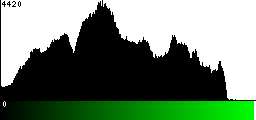
Camels have been domestic animals for thousands of years. he camel is a large, strong desert animal. Camels can travel great distances across hot, dry deserts with little food or water. They walk easily on soft sand where trucks would get stuck, and carry people and heavy loads to places that have no roads. Camels also serve the people of the desert in many other ways.
The camel carries its own built-in food supply on its back in the form of a hump. The hump is a large lump of fat that provides energy if food is hard to find.
There are two chief kinds of camels: (1) the Arabian camel, also called dromedary, which has one hump, and (2) the Bactrian camel, which has two humps. In the past, hybrids (crossbreeds) of the two species were used widely in Asia. These hybrid camels had one extra-long hump and were larger and stronger than either of their parents. Arabian camels may once have lived wild in Arabia, but none of them live in the wild today. There are several million Arabian camels, and most of them live with the desert people of Africa and Asia. The first Bactrian camels probably lived in Mongolia and in Turkestan, which was called Bactria in ancient times. A few hundred wild Bactrian camels may still roam in some parts of Mongolia, and over a million domesticated ones live in Asia.



